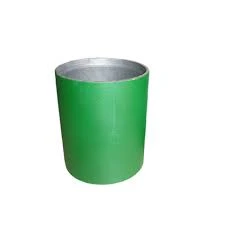- Afrikaans
- Albanian
- Amharic
- Arabic
- Armenian
- Azerbaijani
- Basque
- Belarusian
- Bengali
- Bosnian
- Bulgarian
- Catalan
- Cebuano
- Corsican
- Croatian
- Czech
- Danish
- Dutch
- English
- Esperanto
- Estonian
- Finnish
- French
- Frisian
- Galician
- Georgian
- German
- Greek
- Gujarati
- Haitian Creole
- hausa
- hawaiian
- Hebrew
- Hindi
- Miao
- Hungarian
- Icelandic
- igbo
- Indonesian
- irish
- Italian
- Japanese
- Javanese
- Kannada
- kazakh
- Khmer
- Rwandese
- Korean
- Kurdish
- Kyrgyz
- Lao
- Latin
- Latvian
- Lithuanian
- Luxembourgish
- Macedonian
- Malgashi
- Malay
- Malayalam
- Maltese
- Maori
- Marathi
- Mongolian
- Myanmar
- Nepali
- Norwegian
- Norwegian
- Occitan
- Pashto
- Persian
- Polish
- Portuguese
- Punjabi
- Romanian
- Russian
- Samoan
- Scottish Gaelic
- Serbian
- Sesotho
- Shona
- Sindhi
- Sinhala
- Slovak
- Slovenian
- Somali
- Spanish
- Sundanese
- Swahili
- Swedish
- Tagalog
- Tajik
- Tamil
- Tatar
- Telugu
- Thai
- Turkish
- Turkmen
- Ukrainian
- Urdu
- Uighur
- Uzbek
- Vietnamese
- Welsh
- Bantu
- Yiddish
- Yoruba
- Zulu
Exploring the Functionality and Benefits of Pump Seating Nipples in Fluid Systems
Understanding the Pump Seating Nipple Importance and Applications
In the realm of oil and gas production, various components work in harmony to ensure efficient extraction and transport of resources. One such critical component is the pump seating nipple. This specialized piece of equipment serves a pivotal role in the functioning of downhole pumps, especially in oil wells. Understanding its structure, function, and importance can help elucidate its relevance in enhancing overall production efficiency.
What is a Pump Seating Nipple?
A pump seating nipple is a tubular fitting installed in the tubing string of a well. Its primary role is to provide a secure and stable location for a pump to be seated. Typically made from high-strength alloys or stainless steel, the pump seating nipple is designed to withstand the harsh conditions commonly found in downhole environments, including extreme temperatures and pressures.
The nipple features a specific profile that accommodates the pump's connection, ensuring that the pump remains properly seated during operation. This special design also allows for easy removal and installation of the pump without needing to pull the entire tubing string from the well.
The Function of a Pump Seating Nipple
The main function of a pump seating nipple is to serve as an anchor point for the downhole pump. In many oil wells, especially those that employ artificial lifting methods, the downhole pumps work to bring oil or gas to the surface. By securely seating the pump, the pump seating nipple ensures that the pump operates efficiently and effectively.
Moreover, the pump seating nipple is often equipped with specific features that facilitate the proper alignment and functioning of the pump
. These features may include locking mechanisms that prevent the pump from dislodging during operation, as well as ports or valves that enable other equipment in the well to function optimally.pump seating nipple

Importance in Oil and Gas Production
The role of the pump seating nipple in oil and gas production cannot be overstated. By providing a stable and reliable point for the pump to operate from, it helps to maximize the efficiency of the extraction process. An effectively seated pump ensures consistent flow rates and reduces the risk of operational failures that can lead to costly delays and downtime.
Additionally, the design of the pump seating nipple contributes to the overall safety of the well. By securing the pump in place, it minimizes the risk of pump failure, which can have significant safety implications. In extreme cases, a dislodged pump could lead to uncontrolled flow, which poses environmental hazards and operational risks.
Applications Beyond Oil and Gas
While the primary application of pump seating nipples is in the oil and gas industry, their design and functionality have utility beyond this field. For example, similar components can be found in geothermal energy extraction and water well drilling. In these applications, the need for stability and reliability in downhole pumping operations is equally critical.
Conclusion
In summary, the pump seating nipple is a vital component in the machinery of oil and gas production. By understanding its design, function, and importance, we can appreciate how this small but significant piece of equipment plays a role in the larger process of resource extraction. Its ability to ensure efficient operation, enhance safety, and reduce downtime underscores its relevance, not only in traditional fossil fuel extraction but also in various applications within the broader spectrum of energy production. As the industry continues to evolve, innovations around such components will be essential in meeting the increasing demands for safe and efficient resource extraction.
-
Well Casing Extension Couplings – Applications and InstallationNewsJun.06,2025
-
Types of Crossover Subs in Drilling & CompletionNewsJun.06,2025
-
Key Features of High-Quality Tubing Pup JointsNewsJun.06,2025
-
Installation and Maintenance Tips for Steel Couplings for PipeNewsJun.06,2025
-
How to Select the Right Pup Joint for Oil & Gas OperationsNewsJun.06,2025
-
Applications of Stainless Steel Pipe CouplingsNewsJun.06,2025







